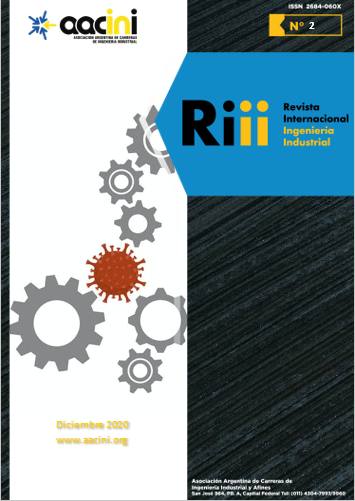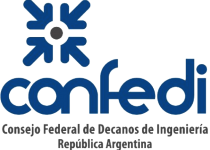Vinculación colaborativa en tiempos de aislamiento social
Resumen
El proceso de aislamiento social puso de manifiesto la necesidad de generar respuestas innovadoras para afrontar diversas situaciones.
Este cambio de paradigma mundial reveló que la vinculación colaborativa de diversos agentes resulta más eficiente y eficaz que buscar soluciones en forma disociada.
Es por ello que la vinculación de lo académico-científico con la salud pública pudo resolver carencias de recursos y equipamientos. La vinculación del Estado con las empresas buscó encontrar soluciones inteligentes para los meses improductivos. Y en todos estos procesos, la solidaridad y compromiso de las personas, tanto en forma individual o colectiva, fue el factor fundamental que posibilitó aplanar la curva de contagio y atender las necesidades de los grupos vulnerables, entre las cuestiones más relevantes.
En el marco de una investigación que se está desarrollando en colaboración entre docentes de las Facultades de Ingeniería de la Universidad Nacional de Salta (UNSa.) y la Universidad Nacional de Misiones (UNaM), fue posible aportar con entidades intermedias en la tarea de recopilación de información. De esta manera, se colaboró en la generación de soluciones y oportunidades a las empresas y organizaciones que dependen de ellas.
Tal fue el caso del trabajo colaborativo entre el equipo de investigadores y Unión Industrial de Salta (UIS) y el Programa de Apoyo Profesional a Pequeños Emprendimientos Salteños (APPES), de la Subsecretaría MiPyMEs y Desarrollo Local, en primera instancia, y luego, con la Municipalidad de Ciudad de Salta.
Con ambas instituciones se trabajó colaborativamente para completar información referida a geolocalización de industrias y comercios y aprovechar este tipo de datos en la generación de oportunidades para el tiempo de aislamiento social.
Descargas
Citas
[2] Blaxter, Loraine, Hughes, Christina, & Tight, Malcolm (2001). How to research. Maidenhead, Berkshire, England: Open University Press.
[3] Hernández Sampieri, Roberto, Fernández Collado, Carlos, & Baptista Lucio, Pilar (2014). Metodología de la investigación. DF México: McGraw-Hill Interamericana.
[4] Groves, Robert M, Fowler Jr, Floyd J, Couper, Mick P, Lepkowski, James M, Singer, Eleanor, & Tourangeau, Roger. (2011). Survey methodology (Vol. 561): John Wiley & Sons.
[5] Fellegi, I. (2010). Survey Methods and Practices, Statistics Canada. Catalogue no. 12-587-X. Edited by S. Franklin and C. Walker.
[6] Zanazzi, José Luis, Alberto, Catalina L, Carignano, Claudia E, Alberto, Catalina Lucía, Gómes, Monteiro, Autran, Luis Flavio, Castellini, María Alejandra. (2012). Aplicación de multi-metodologías para la gestión y evaluación de sistemas socio-técnicos: Asociación Cooperadora de la Facultad de Ciencias Económicas de la UNC. Córdoba, Argentina.
[7] Zanazzi, José Luis, Alberto, Catalina Lucía, Carignano, Claudia Etna, Amateis, Sabrina, Assef, Zaida Melina, Azcona, Noelia, Cabrera, Gabriela Pilar. (2014). Aplicación de multi-metodologías para la gestión y evaluación de sistemas sociales y tecnológicos: Asociación Cooperadora de la Facultad de Ciencias Económicas de la UNC. Córdoba, Argentina.


































































